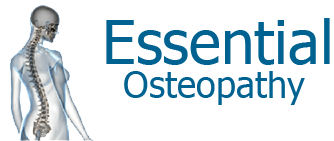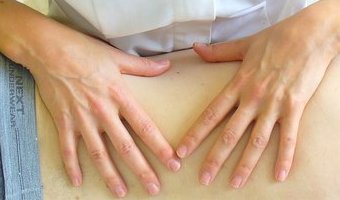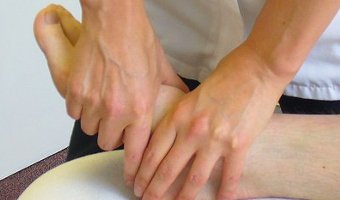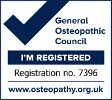Prolapsed or 'slipped' disc in the back
There are lots of terms used for problems associated with the discs in your back including ‘slipped disc’, ‘ruptured disc’, ‘herniated disc’ and ‘strained disc’ but what is a disc, what is actually happening when they ‘slip’ and can an Osteopath fix it?
First the anatomy, the disc is actually called an inverterbral disc – a structure found between the vertebrae similar to a tyre with the tyre part being a tough fibrous outer ring and the centre being gel-like. There are 23 discs in the spine. The disc acts as a shock absorber, giving the spine its curves and joins the spine together. Over time, this shock absorbing capability reduces as the disc wears and looses height due to fluid loss. Small cracks appear in the outer walls and, if put under undue strain, the disc can start to be pushed out of shape and bulge. If the strain on the disc continues, the inside gel-like nucleus pushes through the outer walls (anulus) causing what is called a disc prolapse (‘Slipped disc’ is actually as misnomer as the disc doesn’t actually slip anywhere).
This prolapse can press on the nerves of the spine causing tingling, numbness, pain or power loss in the arms or legs depending on whether the problem is in the neck or low back. In some cases, severe prolapses can press on the spinal cord causing compression which requires urgent medical attention. Osteopaths are trained to recognise any of these signs and act accordingly – referring as appropriate. Mild or severe, standing, sitting, walking, sneezing, coughing and bowel movements can be difficult.
Whether it is a protrusion, minor strain or prolapse, the disc has sustained physical damage which requires time to resolve and repair. Osteopaths encourage this repair by establishing why the particular disc was the one that had the problem in the first place (possibly trauma or wear and tear for example) and then treating to ensure that the spine is optimally placed to enable healing and the protective spasm around the problematic disc is eased. As management of a discal problem is key, advice will also be given to the patient including postural tips, hot or cold packs and stretching as appropriate and recommending that they stay as mobile as possible.
The traditional medical approach to a disc problems is often to offer a combination of pain-killers and muscles relaxants which can work in conjunction with Osteopathic treatment to resolve the disc problem more speedily. If the problem persists or there are any worrying symptoms, the patient can be referred back to their GP for further investigations and, if all else fails, on to a specialist if an operation is required.







